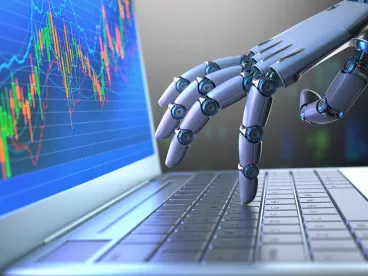Around one year ago, in August 2019, the issue of AI as an inventor burst upon the scene in the form of DABUS (which stands for “Device for the Autonomous Bootstrapping of Unified Sentience”), an artificial intelligence device which was listed as the sole patent inventor on two patent applications (one for a flashlight, the other for a food container) received by the US Patent and Trademark Office. This set up a closely watched decision—would the USPTO recognize an AI entity as a source of invention? In April, the answer came, and the DABUS applications were rejected as lacking a legally recognizable inventor.
The DABUS question has been conclusively resolved from a current legal standpoint: AI such as DABUS cannot be legally classified as an inventor in the US, UK or EU. However, other questions, both legal and ethical, merit further discussion, and as AI becomes both increasingly powerful and more widely used, it stands to reason that AI-related patent and inventorship disputes will arise in legal systems around the globe.
AI and IP: Basic Definitions
“AI has been around for a long time, dating back to the 1950s even, when it was established as an academic discipline,” said Yeen Tham, IP Policy Counsel at IBM. “AI recently has experienced an explosion due to the availability of data and computing power, giving the ability to manipulate very large data sets.”
The field of AI is broad; Tham identified three categories of artificial intelligence as applied to a real-world setting:
- Core AI – Machine learning techniques, including neural networks
- Applications—Computer vision (image analysis), speech recognition, natural language processing
- Fields—Telecom (chat bots & virtual assistants, security scans), transportation (self-driving vehicles, carbon emissions monitoring), life sciences/medical sciences. “These are just a small handful of examples. There are many other fields to which AI can be applied,” she said.
Tham also said a careful distinction needs to be drawn between AI-assisted and AI-generated inventions.
AI-assisted inventions are made with significant human intervention with the aid of AI. For example, a life sciences inventor may use AI software while developing new drugs. Generally, these inventions can be protected as patents under existing law, provided they are novel and non-obvious.
On the other hand, AI-generated inventions are those created by artificial intelligence (such as the DABUS inventions) with little in the way of human contribution. These creations are not protectable under existing patent laws. These applications have been refused by the USPTO, UKIPO and EPO.
However, while the question of AI as a patent holder settled conclusively, there still are remaining questions of how AI fits into the patent application process.
Womble Bond Dickinson IP attorney Bill Jacobs identified three basic categories in which AI may factor into patents:
- Patenting novel AI technologies themselves (such as layering structures w/in neural networks, novel methods of combining AI models, and novel weighting of variables, etc.). “When you think about this category, there are certain challenges that can come up. The biggest one is that the application may be classified as an abstract idea by the USPTO, which brings up a 101 issue. It comes down to an argument that the AI model you are using isn’t a mathematical process or a mental process,” Jacobs said.
- Patenting novel applications of AI technologies. In this scenario, an inventor uses an existing AI model in a novel way to generate a new solution to a unique problem. “This category makes up the bulk of what we see coming into the USPTO related to AI technologies,” Jacobs said. This can include novel types of input data, novel training data and novel pre- and post-processing of data sets.
- Patenting AI generated inventions. This is when an AI actually generates the conception of an invention, such as DABUS. Question: What level of human involvement is needed to list a person as the inventor in order to create a valid patent application? Jacobs asks, “Can an invention generation technology be thought of as something that merely aids your conception of an invention?” Is there a human equivalent (i.e. lab assistant) and AI is serving in that role? “There is some gray area there as well.” Patent applicants can list multiple inventors if they have made a qualifying contribution to the conception of the invention. Can this be reconciled with a notion that AI is part of this process? “Maybe they aren’t entirely responsible for the invention, but can they be a part of it?” Jacobs asked.
AI as an Inventor?
This last point is perhaps the most intriguing, and still unsettled, legal question on the table. Even if an AI is currently ineligible to own intellectual property, should an AI be considered, in legal terms, to be an inventor of a new product, process or technology?
Womble Bond Dickinson attorney Brent Babcock has extensive experience with “inventive contribution” issues as a patent interference and PTAB practitioner and IP litigator. He said there generally are two inventorship issues at play in PTAB proceedings and patent litigation: 1. Conception, and 2. Reduction to practice.
“Here, the issue really is conception, because conception determines who is an inventor,” Babcock said. “So what’s interesting to me about the DABUS situation isn’t that they used a computer to generate a solution to a problem, but that according to (DABUS creator Dr. Stephen) Thalor, DABUS was able to appreciate that what it created was novel and non-obvious.”
So what happens if an AI invents something, but doesn’t know how to practically use it, and a human does? “I think that blurs the lines a little more,” Jacobs said.
Patent offices are relying on existing statutes that require inventors to be people, not looking at philosophical issues. Currently, there is no legal or technical test to establish AI as an inventor.
But even if these tests are established, inventor status for AI raises many questions. At what point is the machine exclusively inventing, without human direction? How does a machine satisfy the duty of disclosure? Also, inventorship is tied to ownership. Who owns the invention absent any contractual obligations? If left to the legal owner of the AI, who owns the AI? If a machine can enjoy the legal status of an inventor, can it be liable for infringement? These questions, and others, remain unresolved—and may remain unresolved for some time.
Babcock said, “As a litigator, I’m always thinking about how do you prove inventorship? With AI, how do you go about that? I don’t think AI has to be able to sit in a deposition to be considered an inventor, but it must be able to meet a burden of proof. That’s one area that has to be addressed if we are going to change the system.”
But Tham noted there is no test for AI as a sentient being, and without such a determination, she said it may be difficult to persuade a court that an AI can be classified as an inventor. “How can an AI develop a sense of value absent a person feeding it their own wants and needs?”
Tham also said the question of ownership is not an easy one to determine, even if the courts have determined that AI itself cannot own patents.
“If we want to default ownership to whoever owns the AI, we don’t really have an easy way to determine who owns the AI,” she said. “If a machine should enjoy the legal status of an inventor, you also have the question of how can it be liable for patent infringement? It’s not an easy question to answer.”
The Future of AI in Patent Law
Beyond the questions surrounding ownership and inventorship, artificial intelligence raises other areas of interests for in-house counsel and the companies they serve.
For example, Tham said IP attorneys need to pay attention to what makes for sufficiency of disclosure in a patent application. Can a sufficient disclosure in an AI-related patent be made in a way that doesn’t disclose a trade secret, such as proprietary algorithms or data sets?
Also, are data sets used to train an AI considered part of any invention? Generally, she says yes, but that’s not to say you can’t claim an invention that doesn’t include the data sets. “The question of what makes for a requisite disclosure could be one that patent policy-makers probably need to consider,” Tham said.
Womble Bond Dickinson attorney Chris Mammen, who has written extensively on the intersection of AI and patent law, also said the question of inventorship will continue to be a point of legal debate.
“One camp says if you have an invention, there must be an inventor, and that inventor must be either the closest human to the process or the AI. Sometimes, that may not be someone who fits into the existing regulatory framework. The other articulation is that to get a patent, you must have an invention and an inventor, and if you don’t have both, whatever it is you’ve got, you can’t get a patent on it,” Mammen said.
Jacobs said that inventions that are generated at least in part by artificial intelligence should be patentable. “Perhaps whether (the invention) is generated by a human or computer for the purposes of determining valid inventorship, as it might with ownership,” he said. However, he noted that humans perhaps could be listed as sub-inventors. He also sees a scenario in which AI is granted inventorship, the rights to which then are automatically assigned to a human owner.
“I’m in Bill’s camp. I think this is just going to be a matter of time before the law is changed to allow AIs to be inventors. And I don’t think it will require wholesale changes to the law,” Babcock said.
But Tham is somewhat more skeptical of introducing artificial intelligence into issues of legal inventorship.
“We need to be very cautious before we make any changes and really examine what needs to be fixed,” she said. “Before you even get to the inventor, you have to answer a lot of questions, including if you have an invention. I think we still want a human-centric approach.”




 />i
/>i

